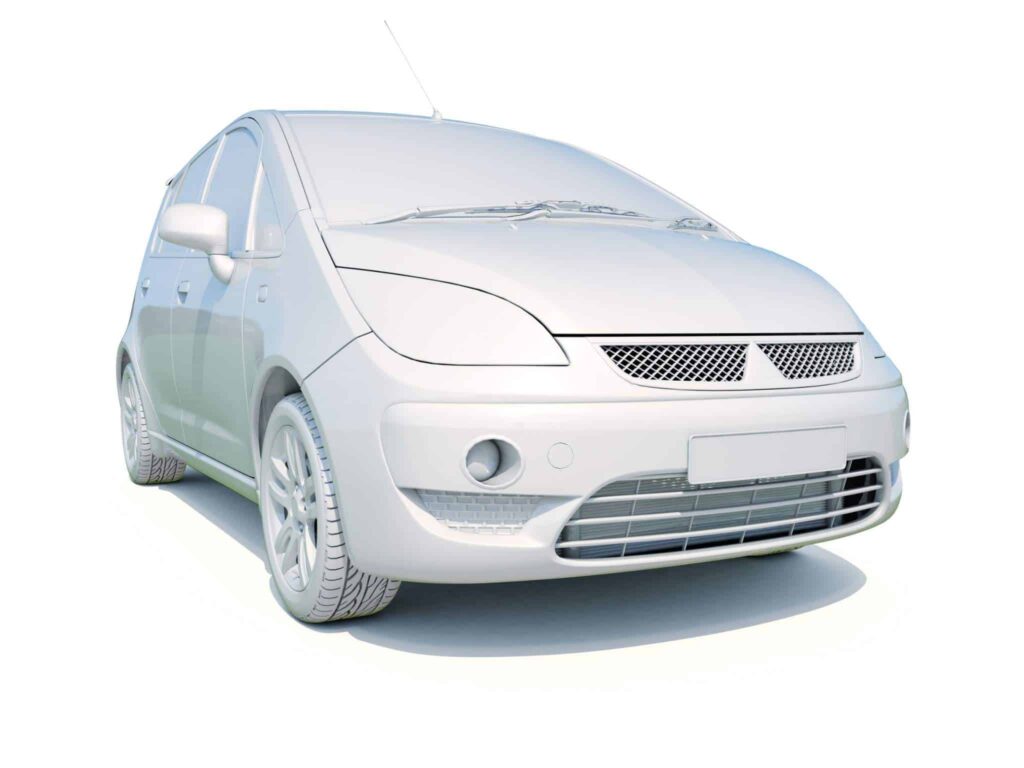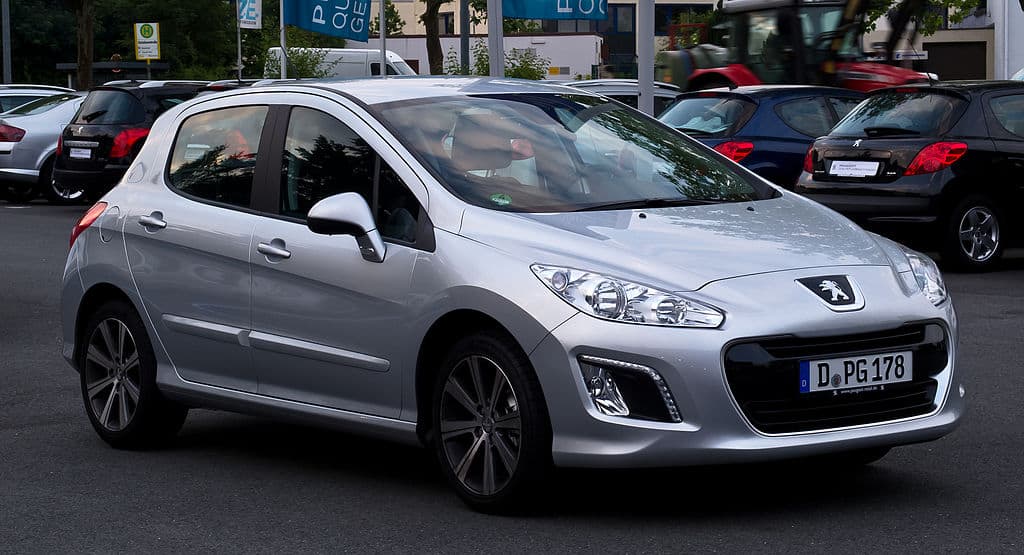29 October 2020 Concept Car
£7,000 is a bit of magical number on the UK car market. We’ll explain why in a second.
What we can already say is this: If you’ve set yourself a limit of £7,000, you’re up for a challenge.
On the one hand, there are plenty of great options at your disposal. Never before were there so many excellent cars available at this price. Never before has the general quality level ever been so uniformly high.
On the other hand, this makes it even easier to commit a serious mistake. If you’re unlucky, it could destroy all the gain you could potentially make.
In this article, we’ve compiled the worst of these mistakes to help you arrive at the best possible car for you.
If you do it right, then those £7,000 can buy you a lot of car for comparatively little money.
This may sound like a strange piece of advice. Usually, we are adamant that you determine which model you want to buy and at what price before even setting foot in a dealership – and then stick to it religiously.
In this case, however, we feel you need to cut yourself some slack.
£7,000, as we’ve mentioned is an important number on the UK car market. Any car that falls below that price automatically seems like a good deal. Those that are only a few Pounds above the fold appear to be a lot more expensive than they really are.
The thing is, though, that, especially in this category, those few Pounds more or less can make a huge difference in quality. Spending a little more now can definitely save you a lot in repair costs later on.
Let’s say you can snap up a Golf in an excellent condition for £7,300. Are you really going to say no that offer just because you’re £300 over your limit? That hardly seems wise.
Obviously, you need to define a cut-off point. And clearly, you should try to stay as close to your original budget limit as possible, But, for once, don’t consider it as set in stone.
The Dacia Sandero changed her market segment just like the Duster changed his.
Before these models hit the dealers, there was a clear divide between the new- and the second hand car market.
You could either buy new, with all of the excitement and technical benefits that came with it. Or you could opt for a used vehicle, which offered great value for money but (usually) less of an adrenaline kick.
The Sandero sat somewhere between these poles. It was brand new, yet offered the bare minimum in terms of performance and extras. It looked stylish and cool, but slightly less exciting than most of its competitors. And its pricing sat right in the middle between a new and a used car.
This turned out to be a gamechanger. Many who would never have considered buying new now drove home with a Sandero. It felt like an act of empowerment.
When Rory Read from Autrader investigated the UK market for potentially interesting cars under £7,000, he therefore used the Sandero as a yardstick. His question was as follows:
What can you get on the second hand market instead of spending £7,000 on a brand new Sandero?
It sounded like a reasonable point of departure. As you’d expect, Rory came up with some pretty interesting options. Many of these cars looked quite a lot more spectacular than the Romanian Supermini.
This, however, is a misleading approach to car buying. Sure, it can be a lot of fun browsing websites like Autotrader for deals. This, however, detaches yourself from your original goals – i.e. from what you actually want or need.
The Sandero is not a barely drivable ramshackle combination of car parts. It is actually a very nice and charming car in its own right. There are plenty of reasons to favour this model over, say, an old Porsche or Mercedes you can snap up for just under £7,000.
If a Sandero-type-of-car is what you need, then it makes sense to pit a new Sandero against, say, a used Golf with plenty of extras and see how they perform. But don’t start playing around with numbers just because you can.

Usually, it pays off to keep your options open. And in general, it makes sense to be open-minded when it comes to cars.
However, you can be a little bit too open minded.
If you have a Nissan Quashqai, a Mini and Volkswagen Passat on your wishlist, then that’s not being open-minded. It’s arbitrary.
You’re not doing yourself any favours with this strategy. Perhaps you believe that, this way, you can be satisfied with almost any car you buy. Usually, however, the exact opposite is true: You’ll be disappointed with almost any choice you make.
What could a Mini and a Passat possibly have in common which would make both a suitable option for you?
Instead, define precisely what you want and need out of a vehicle. Take your time figuring that out. Then, based on your conclusions, create a short list of cars which meet these requirements. Doing so will turn out to be incredibly helpful in finding the best deal.
If you’re comparing a cheaper car to a more expensive one, you will often have conflicting thoughts:
Should you buy the higher quality model? Sure, it will be mechanically and technologically superior. On the other hand, it will probably offer nothing but the very essential in terms of extras.
Or should you instead get a much cheaper model, which may be slightly less formidable, but which you can then dress up with plenty of extras and perks?
Especially if you set yourself a limit of £7,000, this conflict can become a serious conundrum.
This is because so many dealers treat that limit like a magic number and will try to price some of their cars just below or just over it. As a consequence, you can suddenly chose between cars which, other than meeting your basic criteria, are still very different.
A barebone Golf or a fully equipped Honda Jazz? A stripped-down Fiesta or an upgraded Hyundai i30? The list goes on and on …
In our opinion, quality should always win out. At £10,000, things might be different, because the overall quality level is just that decisive bit higher and you really can’t go wrong. But at £7,000, there are plenty of restrictions requiring manufacturers to make quality cuts somewhere.
Safety features are an excellent area for breaking the tie: In case of doubt, always go for the model with the best safety ratings and features.
Safety features aside, what is the most important variable when it comes to buying a used car?
Some might argue: The engine. You’re not going to enjoy driving a car if it’s not powerful enough or doesn’t offer enough excitement.
Others will say: Fuel consumption and reliability. The more economical and durable your car, the more you’ll save in terms of running costs and repairs.
We’d like to make a different argument. Within the budget limit we defined for this article, space is the #1 asset. This is because space is limited for most cars in this category. And yet, space can be decisive when it comes to whether or not a car offers you fun and functionality or becomes a nuisance.
A Polo is a great car if you’re a 2- or 3-member family. But if you have two kids and a dog, a Honda Jazz or a Seat Leon will seem like a better choice – and they can roughly cost the same!
Believe us, there can never be enough space. So unless you have very good reasons not to, make it one of your main criteria when selecting the best model for you.

We’ve mentioned the Hyundai i30 before. Let’s add the Dacia Duster to that and ask yourself this question: Would you seriously consider them over a Golf or a Fiesta?
Sure, the Golf or Fiesta are more expensive. But as long as you stay within your financial limit, you should be okay, right?
Here’s something to consider: Opting for a less well known / less respected / less prestigious brand can save you up to £2,000 compared to the market leaders. You can either invest this money into sensible extras or additional safety features. Or you can leave it on the bank as an insurance against hard times. Alternatively, you can use it to put down a bigger downpayment.
But didn’t we just say that you should always opt for quality?
True. But think about it:
They’re all reliable. They’re all at least decent to drive and very economical. They all look good. None of them is going to rust away if you leave it standing in the rain for too long.
Plus, some of the ‘smaller’ brands have actually overtaken the traditional makes when it comes to reliability. Sure, very little beats a Fiesta when it comes to performance. And no car can match the Golf’s allround excellence.
Then again, you may be able to sacrifice a little of that, if you’re pressed for cash. Very few models out there are truly going to disappoint you. In fact, you may be surprised about just how great some of these supposedly inferior brands can be.
If a car meets your needs and your budget, you should not be afraid to give it some serious thought.
Depreciation is by far the biggest pricing factor on the second hand car market. That may sound like a piece of trivial wisdom. But it’s not, really.
In the UK, a Golf starts at £23,875. You’ll have to wait about six to seven years for this price to drop below our budget line of £7,000.
Compare this to a Vauxhall Astra. The simplest configuration clocks in at just under £20,00, so slightly cheaper than the Golf. It falls below £7,000 one or two years earlier and at that price, you can get a far better trim level.
Now, the Golf and the Astra are both excellent cars. But the point becomes even clearer with something like a Duster. Although it’s a fine and fun car, it is obviously not comparable to these market leaders.
What this means is: The divide between high quality and low quality cars will only get bigger on the used car market. The established brands are relatively speaking even more expensive than they were before. And the less respectable brands are even cheaper.
You can draw a few useful conclusions from this:
Whatever your preferences – depreciation is an essential factor to consider.
Now we’ve covered all the mistakes you can make when looking for a used car – let’s take a look at some of the best cars within your budget.

(Image by https://de.wikipedia.org/wiki/Benutzer:M_93)
The 308 gets mentioned a lot when it comes to great cars under £7,000. The reason? It has a lot of charm and is an all-around great car. As Honest John put it:
“A much underrated car – it’s genuinely good enough to compete with the likes of the Honda Civic and ever-popular Ford Focus. (…) Plus it comes with the excellent 1.2-litre Puretech petrol engine which is one of the best small turbo engines around.”
It’s been mentioned before in this article, but for a reason: The Jazz is one of those great surprise stories: Slightly bland brand comes up with a hip car and actually pulls it off. The Jazz looks different, feels different and still manages to meet almost every possible demand in the book.
Called a ‘Tardis’ by some, it is one of the biggest cars of its class on the inside. Which is great news if you’re looking for an affordable family car.
If the Jazz is not entirely your thing, then the Civic is a great alternative from the same manufacturer.
Vauxhalls are incredible second hand cars. They’re great to drive, habitually earn excellent reviews and reasonably reliable. They also depreciate faster than almost any other major car brand. This, on the other hand, makes them an excellent choice if you’re working on a tight budget.
The Insignia is no different in this regard. Buy a Car sums up its benefits in just two words: Comfortable and spacious.
In the end, what more do you need?
A used Ford Fiesta is an obvious choice for a used car under £7,000. But did you know that you can also get a Ford Focus https://www.conceptcarcredit.co.uk/ford-focus-car-decade/ at this price? You get pretty much the same driving feeling with a lot more space.
Now, you do need to be careful. Not all model generations were equally great. But if you do your research and read our article on a used Ford Focus, then stand every chance of getting a great, spacious car at an incredible price.
These three models are all produced by the Volkswagen Group and they’re all based on the same platform. They look very similar, too. And yet, each has its distinct benefits.
The Golf is probably the most refined car you can buy under or slightly above £7,000. It is reliable, offers great performance and comfort, is spacious enough for a family and very economical.
The Seat is even more spacious and only a tad less exciting visually.
However, surprisingly, the Skoda, curiously, is generally considered the best of the three in many comparative reviews. It is just an incredibly useful and fun car.
So whatever your preferences – you really can’t go wrong with either of these three.
If you’re up for a more leftfield choice, we have a few for you:
29 October 2020 Concept Car